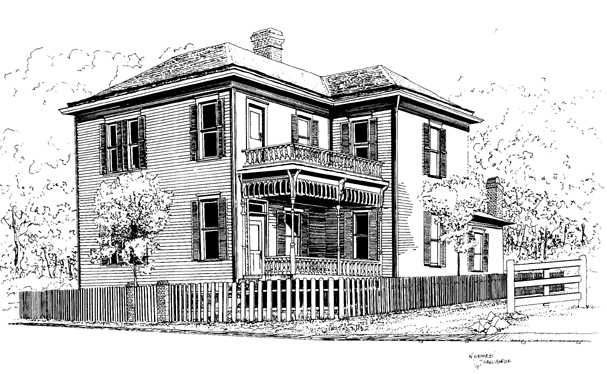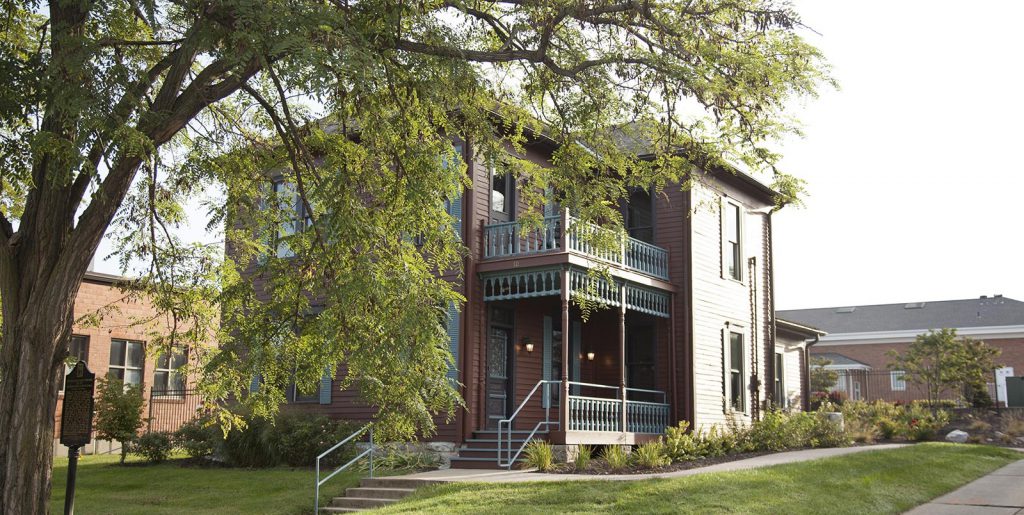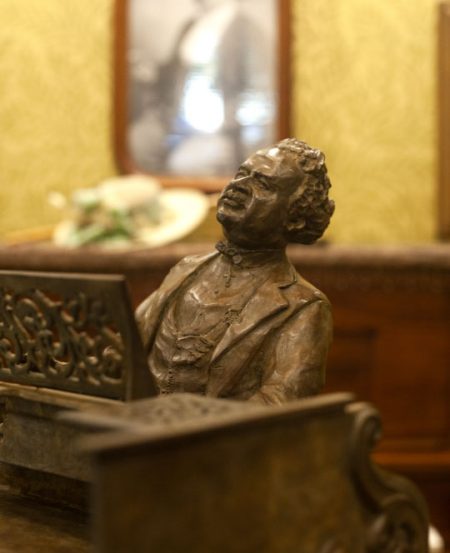History of the Blind Boone Home

John Lange Jr. built the home on a lot that overlooked Flat Branch Creek, as a wedding present for his sister and brother-in-law, John and Eugenia Boone.
The home was built between 1888 and 1892 and measures 46’ by 45’. While Boone occupied the home, it was sided with wooden weatherboarding and featured a two-story front porch that opened on to the second level. Wooden shutters flanked the windows.
During the 1930s or 1940s, the house was covered with a layer of stucco, which was subsequently hidden under aluminum siding during the ’70s. Two additions were added to the original house, one on the east side during Boone’s lifetime and another on the north side during the 1940s. The additions and successive exterior layers not only dramatically altered the original Victorian appearance but also obscured the historical integrity of the house as a whole.
Fortunately, the interior of the house retained much of its original woodwork, including pocket doors, fireplace, and an open, curving staircase. Today, these elements look much as they would have during Boone’s lifetime.
After Boone’s death in 1927, his widow, Eugenia, retained ownership until 1929. In 1931, William and Parker Undertakers moved in. One of the partners, Stuart Parker, constructed the north addition to use as a funeral chapel. In the 1960s, the south room of the eastern addition was renovated to use as an embalming laboratory. Harold Warren, one of Parker’s former employees, eventually acquired the home and for over 30 years operated Warren Funeral Chapel.
A Victorian era home, located in downtown Columbia, is a rare and precious possession. The home has extraordinary symbolic significance. Few African-Americans born during the civil war could have owned such a grand residence. This is a tacit tribute to the greatness of the man.

National Register of Historic Places


On September 4, 1980, Boone’s home, along with Second Baptist Church, Douglas High School, Fifth Street Christian Church and St. Paul AME Church, were placed on the National Register of Historic Places as the “Social Institutions of Columbia’s Black Community.”
More significantly, on July 2, 2003 the U.S. Department of the Interior’s National Park Service individually listed Boone’s home on the National Register of Historic Places. The home was described as a rare surviving home of an extremely significant 19th and early 20th century Black musician.
Art and Artifacts
A prominent feature of the home is a bronze sculpture by renowned artist Harry Weber that beautifully captures the musical passion of “Blind” Boone performing on his Chickering grand piano. Weber, whose sculptures have won major awards at national juried competitions, embodies the ability to bring alive his subjects with fluid power and spontaneity.
Other works by Harry Weber appear at the Museum of Fine Arts in Newport, Rhode Island, in the Baseball Hall of Fame at Cooperstown, and in the National Dog Museum. A twice-life-size monument of Lewis and Clark on the St Louis waterfront, commemorating the bicentennial of the expedition, has been designated a National Lewis and Clark site by the Federal Parks Department. He was also selected in a national competition to sculpt a statue of Dred Scott, which now stands at the Old Courthouse in Saint Louis, Missouri where the Supreme Court Decision was made.
For further information visit the Harry Weber website.



